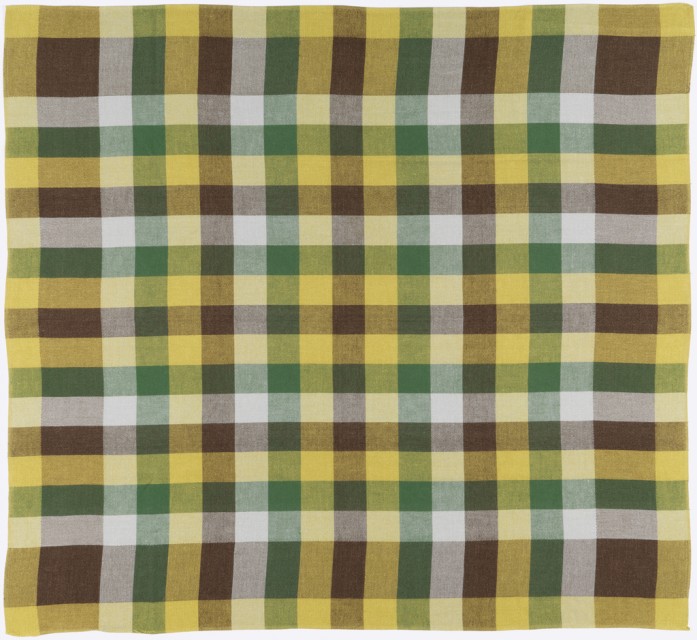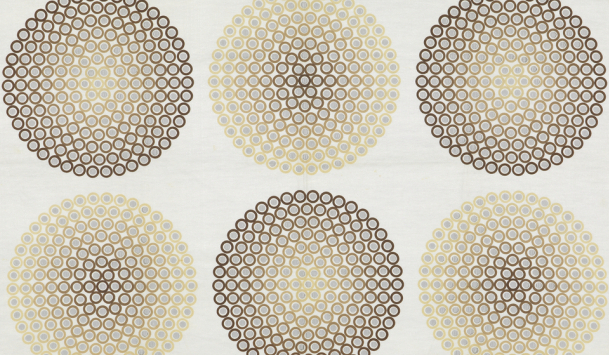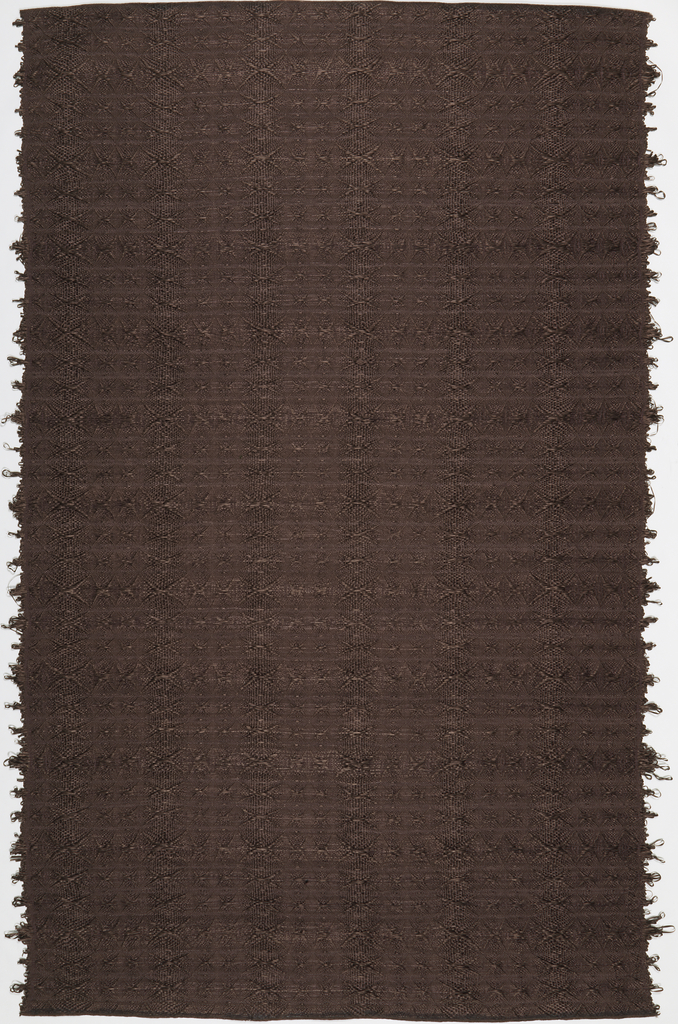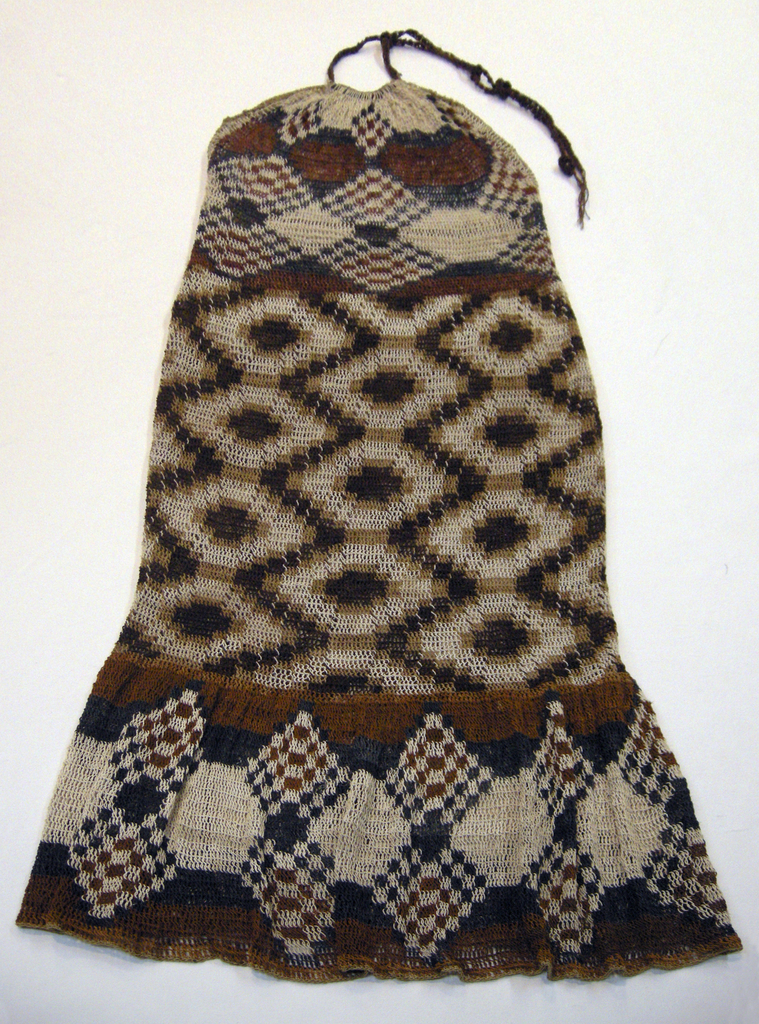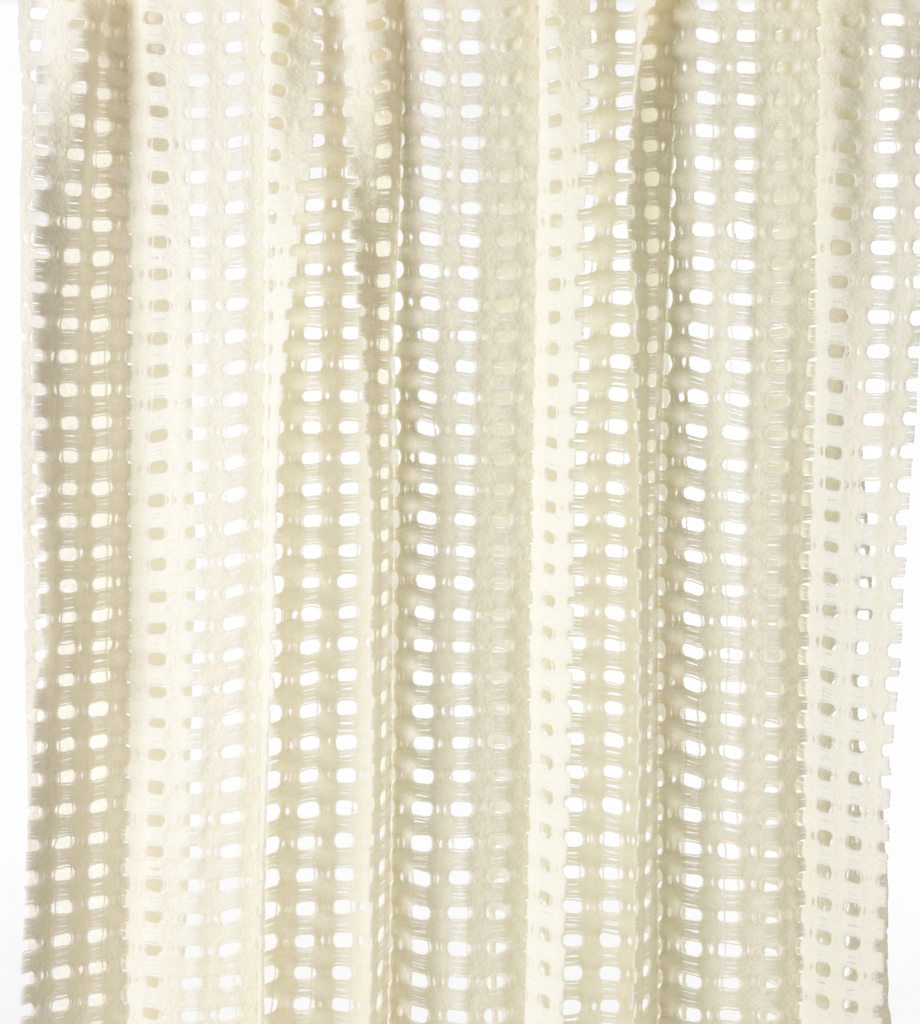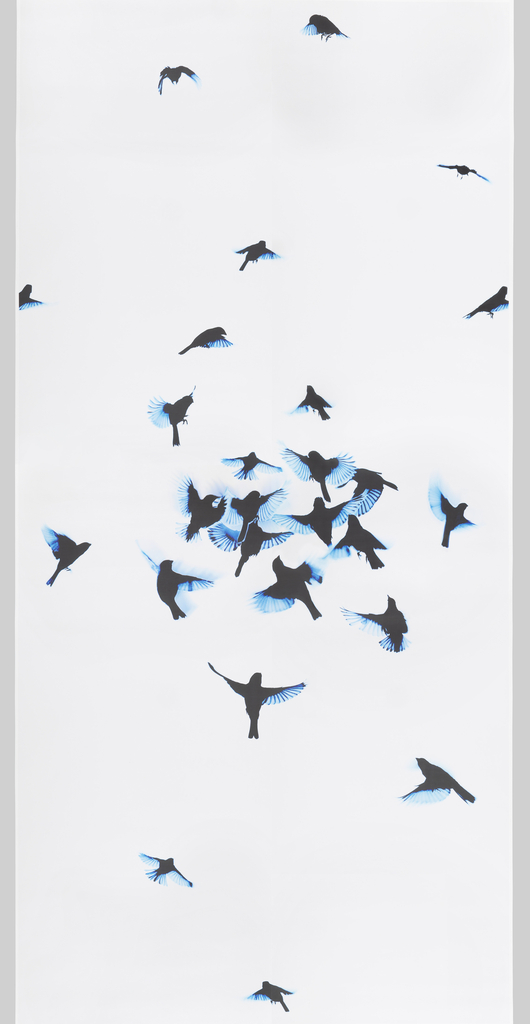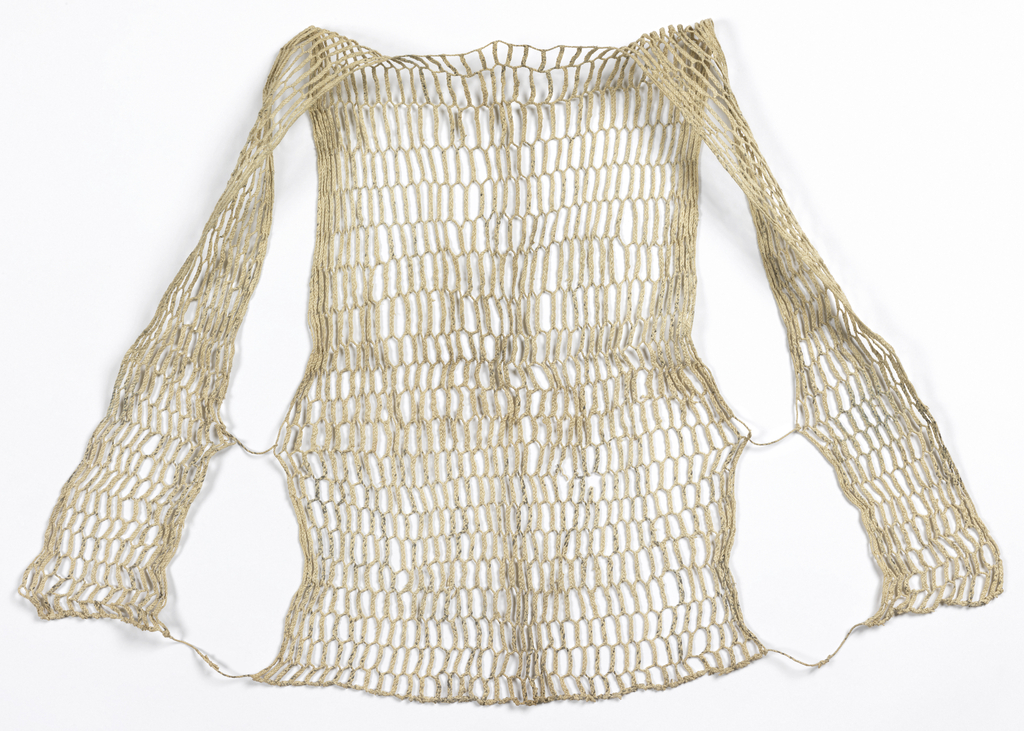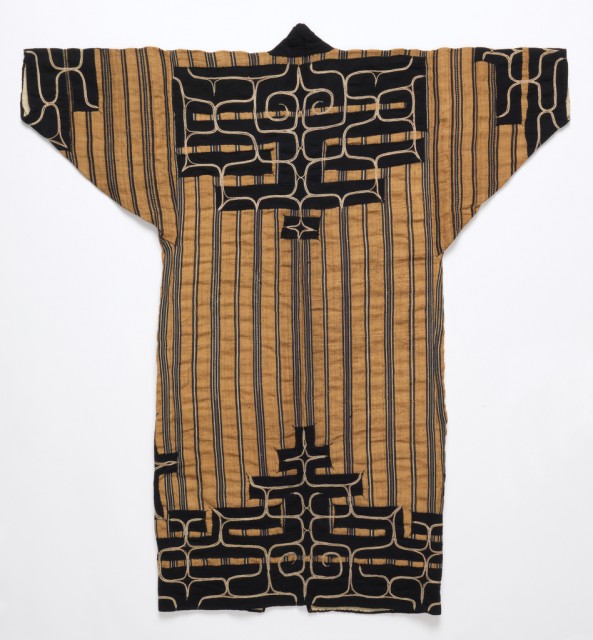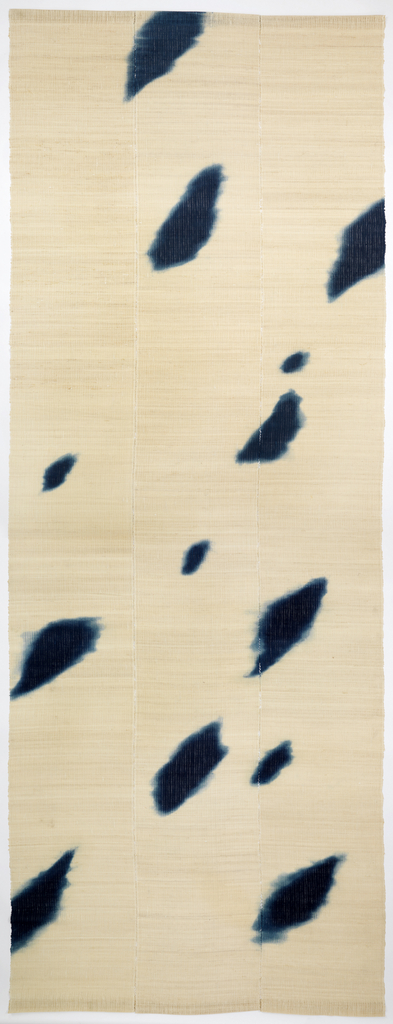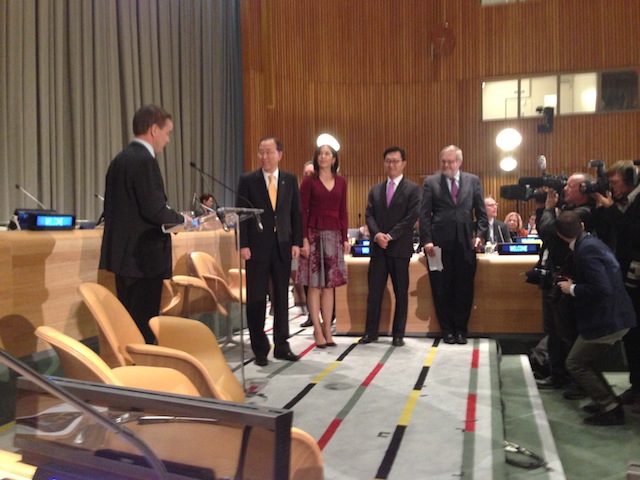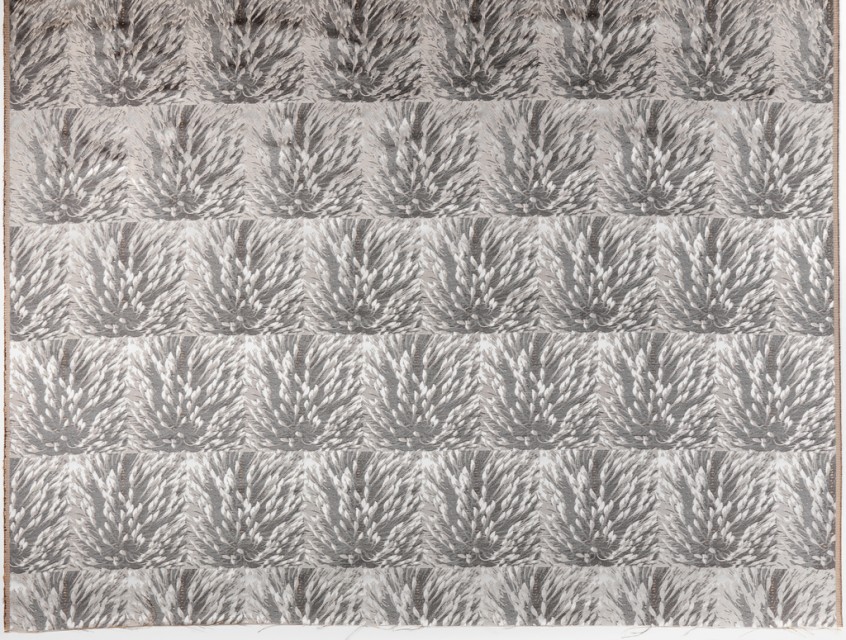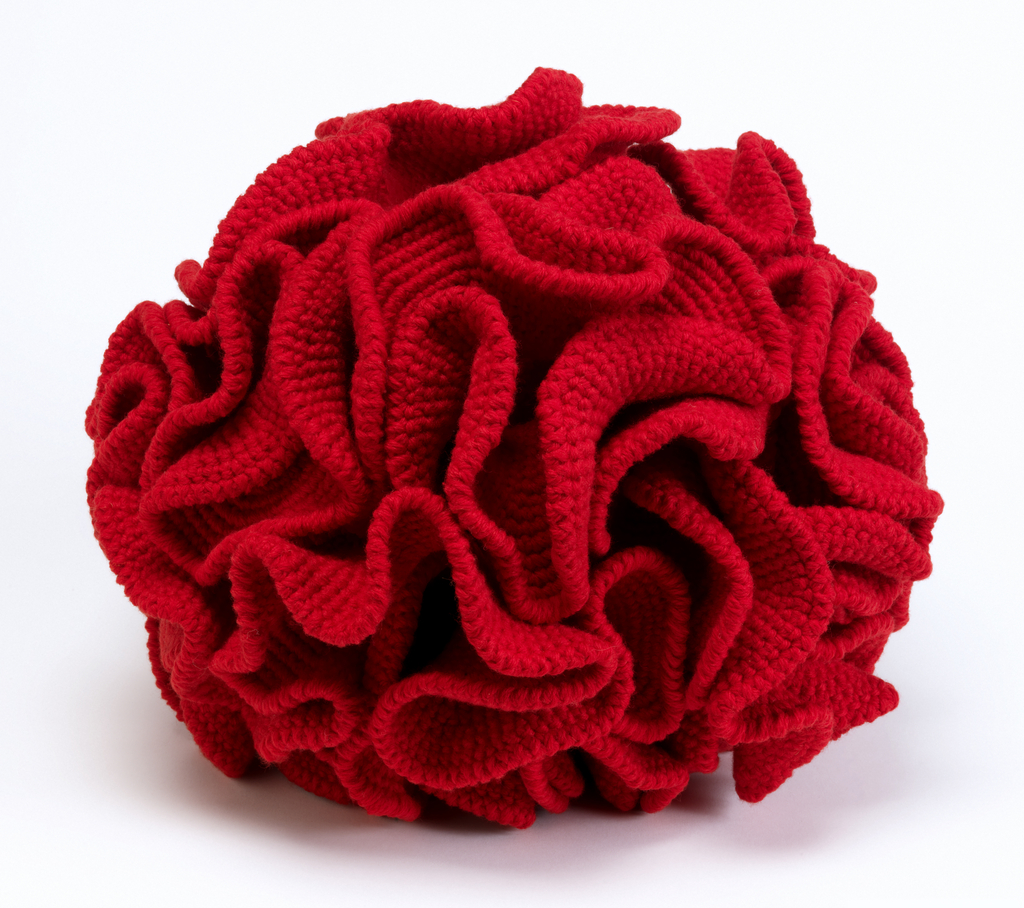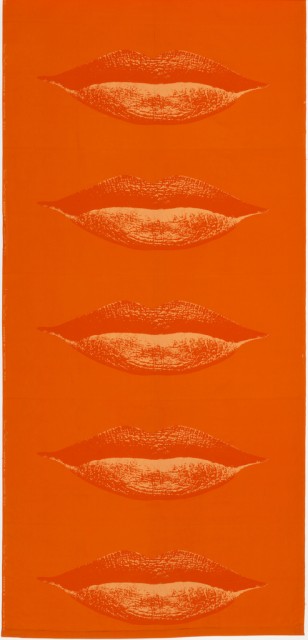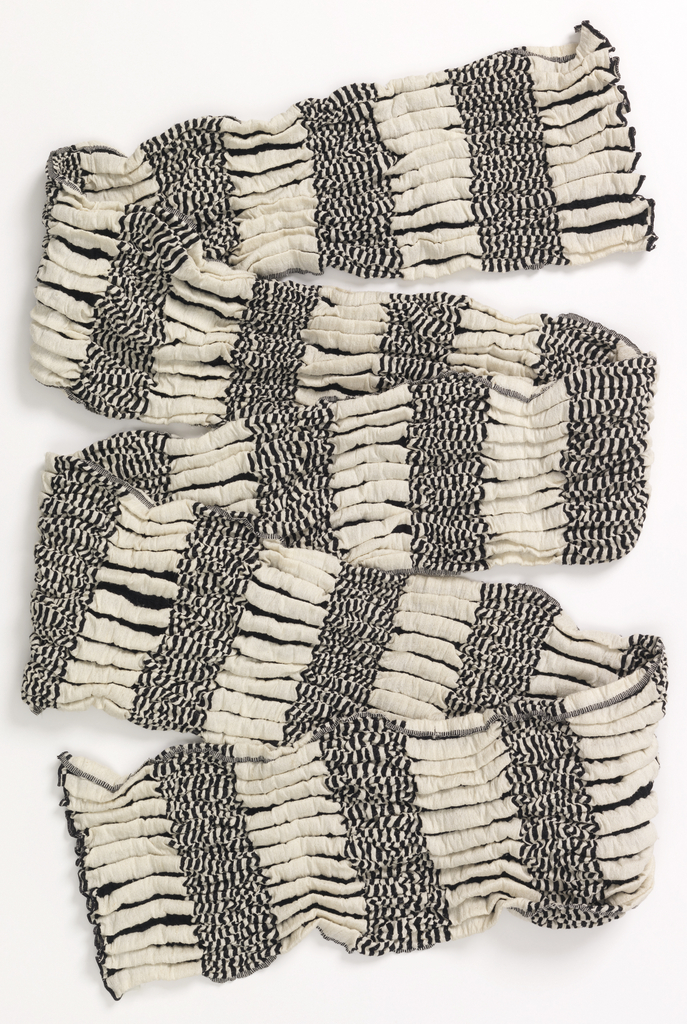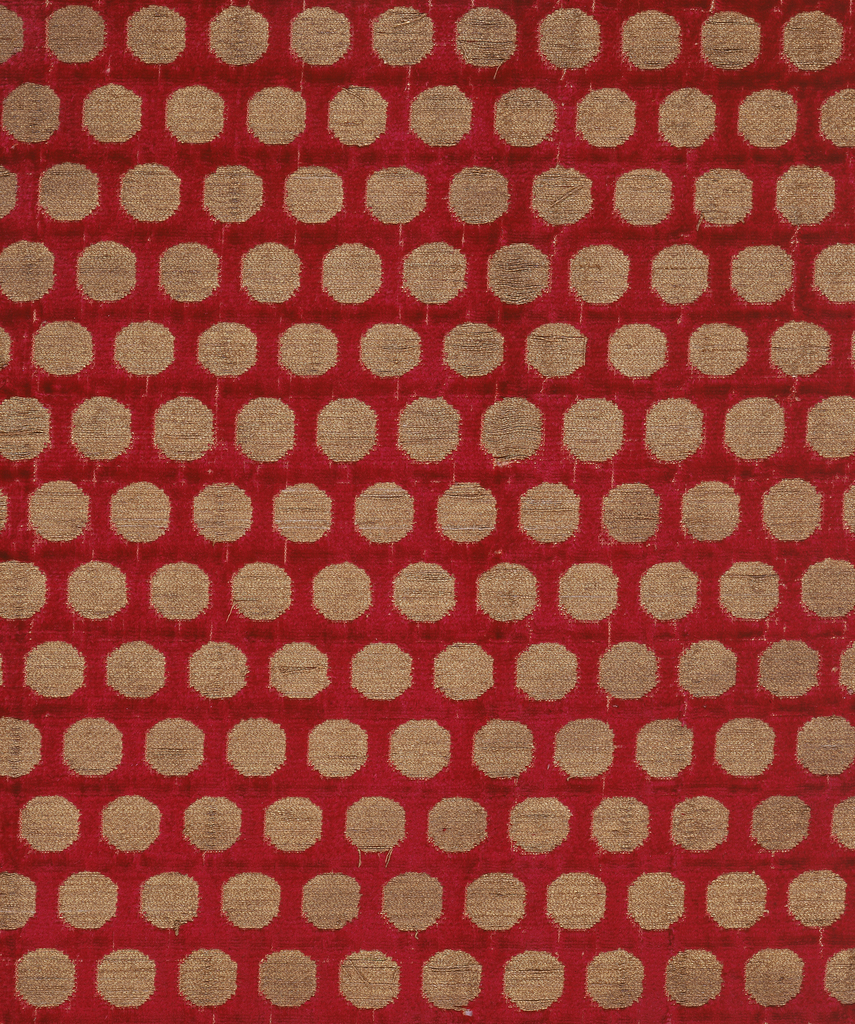This dress, woven by Lydia Novillo in a women’s cooperative in Formosa, Argentina, illustrates the continuation of an important South American textile tradition through a contemporary lens. The tradition stems from the weaving practices of the indigenous people of South America, the Wichi, who live primarily in Formosa, an isolated area in northern Argentina. Originally settling near the Bermejo and Pilcomayo Rivers, they were semi-nomadic, agricultural people who also relied on fishing during the dry season. For centuries they have used the fibers of the chaguar, from the bromeliad family, to weave fishing nets, bags, and other objects, which continue to sustain many of the communities today.
Felt Lace X-Change was designed by Paula Verbeek-Cowart in 2008, and was woven by Oriole Mill, founded by Bethanne Knudson and Stephan Michelson in Hendersonville, North Carolina in 2006. The mill offers custom woven and designed textiles, focusing on quality, rather than quantity and speed, in the production process. They are dedicated to making the finest jacquard and dobby fabrics from natural fibers and ultimately hope to lead a resurgence of small artisanal mills in this once vibrant textile-making area of the country. One of the outcomes of opening the mill has been the formation of Studio Structure by Knudson and Pauline Verbeek-Cowart. Felt Lace X-Change reflects the mission of the mill in its craftsmanship and experimentation with natural fibers and also demonstrates Verbeek-Cowart’s interest in exploring the ways in which wool can be transformed.
In the current wallcoverings market, environmentally friendly examples are extremely limited, and papers made with toxic inks, vinyl, and other noxious elements still plague the industry. In 2006, artists Jee Levin and Randall Buck founded Trove, a New York–based company that designs and manufactures commercially rated, environmentally responsible wallcoverings.
